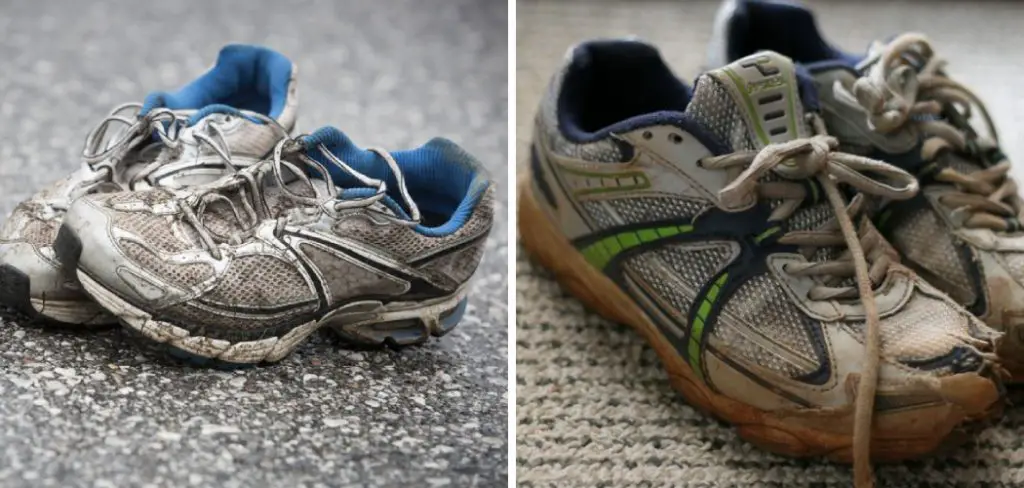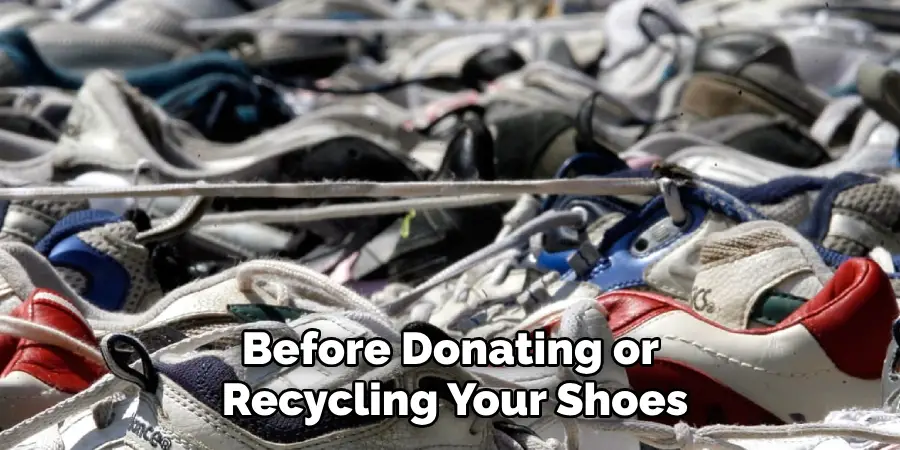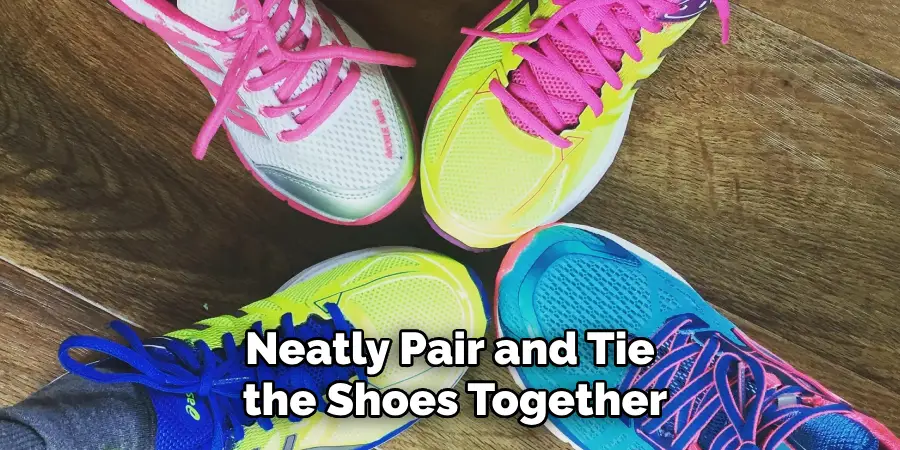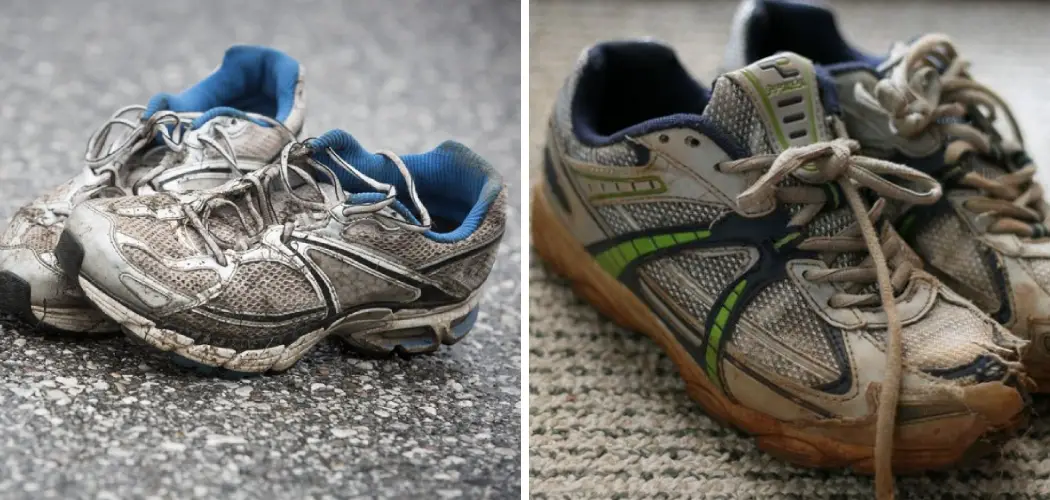Are you tired of hoarding old shoes in your closet? Do you have a pile of worn-out sneakers or sandals you don’t know what to do with? Instead of letting them take up space, why not dispose of them and make room for new ones?
When shoes reach the end of their usable life, finding a responsible way to dispose of them can be challenging. Tossing them in the trash contributes to landfill waste and isn’t environmentally friendly, but luckily, there are many other alternatives. From donating gently used shoes to recycling programs and upcycling projects, sustainable options exist.
This guide will explore various methods on how to dispose of old shoes, ensuring that even your footwear can have a positive impact on the environment.

What Will You Need?
Before you dispose of your shoes, it’s important to gather any necessary materials. Depending on the disposal method you choose, these may include:
- A trash bag or box
- Old newspapers or paper bags for packaging
- Cleaning supplies (if donating)
- Scissors (for upcycling projects)
Once you have everything ready, you can start the process of disposing of your old shoes.
10 Easy Steps on How to Dispose of Old Shoes
Step 1. Assess the Condition of Your Shoes:
Before deciding on the appropriate disposal method, closely examine each pair of shoes to determine their condition. Check for visible signs of wear, such as holes, tears, or significant fading. If your boots are still in relatively good condition, consider donating them to a charitable organization or a shoe drive. Many non-profit organizations accept gently used shoes and distribute them to needy people. However, recycling might be the best option if the shoes are too worn out.
Recycling programs often break down shoes to repurpose materials like rubber and fabric. For shoes beyond repair, consider upcycling them into something new, such as planters or art projects, which can creatively extend their life. Assessing the condition of your shoes is crucial, as it guides the following steps and maximizes the positive impact of your disposal choice.
Step 2. Clean Your Shoes:
Before donating or recycling your shoes, cleaning them properly is essential. Remove any dirt, mud, or debris from the exterior with a damp cloth or brush. Consider using a mild detergent with water for fabric shoes to remove stubborn stains. Additionally, you can use a soft-bristled toothbrush to get into small crevices. Let your shoes air dry completely before proceeding with the next steps.
Cleaning not only preserves the quality of the shoes but also shows respect for recipients who may benefit from your donation.

Step 3. Decide Where to Donate or Recycle Your Shoes:
Once your shoes are clean and ready for their new purpose, it’s time to decide where to donate or recycle them. Many local charities and thrift stores accept gently used shoes. Research organizations in your area that have shoe collection programs, or consider national programs like Soles4Souls or Goodwill. For shoes that are not suitable for donation, look for recycling options. Some shoe brands offer take-back programs to recycle old footwear.
You can also explore community recycling events or facilities that accept shoe donations. Making an informed choice about where to donate or recycle ensures that your shoes end up in the right hands and contribute to a sustainable practice.
Step 4. Package Shoes For Donation or Recycling:
Once you have decided where to donate or recycle your shoes, it’s essential to package them appropriately. For donations, neatly pair and tie the shoes together to prevent them from getting separated. Use a box or sturdy bag to contain them; if possible, label it with the organization’s name where you plan to donate. If recycling, check any specific instructions the recycling program may have regarding packaging—for example, some programs prefer shoes to be bagged separately or with accompanying material labels removed.
Proper packaging ensures that the shoes are easily transportable and keeps them in the best condition for their next journey, whether in someone’s closet or a recycling facility.

Step 5. Deliver or Ship the Shoes:
After packaging your shoes appropriately, the next step is to deliver or ship them to your chosen destination. If you donate locally, consider dropping them off in person at the organization or store, as this saves shipping costs and reduces carbon emissions associated with mailing. Confirm the drop-off details, including location and operating hours, to ensure a smooth delivery.
For donations or recycling programs requiring mailing, ensure the package is securely sealed and labeled with all necessary postage and shipping information. Specific programs may provide prepaid shipping labels, so check for special shipping instructions or promotions. Delivering or shipping your shoes correctly ensures they reach their destination promptly and in good condition.
Step 6. Track Your Donation or Recycling:
Consider tracking their progress once your shoes are on their way to their new home. This is especially important for shipped items, as it allows you to confirm their delivery. Many recycling programs and donation services offer tracking options, providing peace of mind that your shoes will be used as intended. If applicable, call or email the receiving organization to verify the arrival of your donation and obtain feedback.
Tracking your donation or recycling completes the process and gives you a sense of fulfillment, knowing that your efforts contribute to a more sustainable way of living.
Step 7. Reflect on the Benefits of Your Contribution:
Taking the time to properly dispose of your old shoes by donating or recycling has significant positive impacts. Reflecting on these benefits can be encouraging and motivate further sustainable actions. By donating, you’re directly helping someone in need by providing them with functional footwear. This act contributes to improving their quality of life and supports organizations that work to uplift communities.
Recycling, on the other hand, helps reduce waste and divert materials from landfills. It supports closing the loop for materials, allowing them to be reused in new products, which conserves resources and energy. By responsibly disposing of your old shoes, you play a vital role in fostering a sustainable future and demonstrating mindful consumption.

Step 8. Encourage Others to Join:
After successfully donating or recycling your shoes, consider spreading the word to encourage friends, family, and colleagues to contribute to similar efforts. Share your experience on social media platforms or local community groups to raise awareness about the benefits of properly disposing of old footwear. Highlight the positive impact on both individuals and the environment.
You might organize a shoe collection drive in collaboration with local organizations, providing others an easy way to participate in this eco-friendly initiative. Inspiring others to act contributes to a more significant movement toward sustainability and community support.
Step 9. Maintain the Practice:
To ensure the habit of donating or recycling shoes becomes a regular practice rather than a one-time effort, set reminders or plan periodic assessments of your shoe collection. Evaluate the footwear you no longer use or need every season or at the turn of each year. Keeping a separate area for gently used shoes ready for donation can streamline this process.
Additionally, stay informed about new donation or recycling programs and initiatives, as they can present more convenient options or broaden the range of items that can be responsibly discarded. By making shoe donations and recycling a sustained effort, you contribute to long-term environmental benefits and community well-being.
Step 10. Educate Yourself and Stay Informed:
Continuing to educate yourself about sustainable practices and staying informed on current trends in recycling and donation can enhance your contribution to environmental efforts. Subscribe to newsletters and join online communities focused on sustainability and eco-friendly lifestyle practices. This ongoing education keeps you updated on innovations and new methods of contributing positively to your community and the planet.
Knowing about evolving guidelines and technologies can optimize your efforts in shoe recycling and other environmental pursuits, ensuring that your practices remain effective and impactful. Additionally, investigate the environmental policies of the brands you purchase from, supporting those who prioritize sustainability.
By following these steps, you can efficiently and effectively donate or recycle your old shoes while positively impacting both individuals and the environment.
5 Things You Should Avoid
- Throwing Shoes in the Trash: Shoe disposal in the general garbage bin contributes to landfill waste and environmental pollution. Many shoe materials take a long time to decompose, leading to a buildup of waste that could have been repurposed or recycled.
- Ignoring Local Guidelines: Different areas have varying regulations regarding waste disposal and recycling practices. Neglecting these guidelines can lead to inappropriate disposal and potential fines. Always check your local municipality’s rules before discarding old shoes.
- Donating Unusable Shoes: Donating shoes that are beyond repair or unusable is unhelpful to charitable organizations and can result in extra costs for waste management. Only donate shoes that are in decent, functional condition.
- Not Removing Personal Data: If your shoes include innovative technology or tracking devices, remove or reset these components before disposal. Failing to do so could make personal data accessible to unauthorized individuals.
- Using Excessive Packaging: Avoid using unnecessary amounts of packaging materials when shipping shoes for donation or recycling. This increases waste and negates some of the environmental benefits of your efforts to recycle or donate shoes.

Conclusion
How to dispose of old shoes thoughtfully and responsibly not only aids in reducing environmental impact but also extends compassion and support to those in need.
By following the outlined steps, you contribute to a cycle of sustainability that benefits both the planet and its inhabitants. It’s essential to assess the condition of your shoes, choose recycling or donation options suited to their state, and actively engage with local or global initiatives to minimize waste. Sharing this knowledge and fostering a community spirit around sustainable practices further amplifies the positive impact.
Ultimately, the actions taken today in responsibly managing shoe disposal can lead to a healthier planet and more empowered communities tomorrow.

